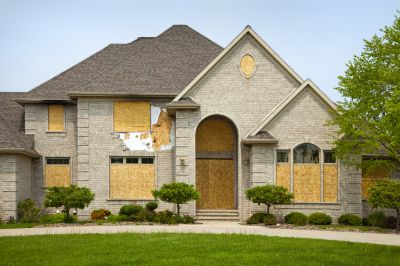Leading Exterior Board Replacement Options for Curb Appeal Enhancement
Choose from premium products that help boost your home's exterior look while ensuring durability and ease of installation.
 Exterior board replacements are an essential aspect of maintaining the integrity and appearance of a building's exterior. Whether repairing damaged siding, replacing rotted wood panels, or updating weathered surfaces, selecting the right products is crucial for achieving durable and visually appealing results. A wide variety of materials and styles are available to suit different architectural styles and functional needs, from traditional wood boards to modern composite options. Proper selection and installation can help protect structures from the elements, prevent further deterioration, and enhance curb appeal.
Exterior board replacements are an essential aspect of maintaining the integrity and appearance of a building's exterior. Whether repairing damaged siding, replacing rotted wood panels, or updating weathered surfaces, selecting the right products is crucial for achieving durable and visually appealing results. A wide variety of materials and styles are available to suit different architectural styles and functional needs, from traditional wood boards to modern composite options. Proper selection and installation can help protect structures from the elements, prevent further deterioration, and enhance curb appeal.
Top Overall Option
Composite Exterior Boards
Composite exterior boards are crafted from a blend of wood fibers and plastic resins, offering a low-maintenance alternative to traditional wood siding. They are designed to mimic the appearance of natural wood while providing enhanced resistance to moisture, pests, and UV damage. These boards are often available in a variety of textures and colors, making them adaptable to different aesthetic preferences. Easy to install and maintain, composite boards are a versatile choice for exterior replacements, especially in areas prone to weather-related wear. Their durability and aesthetic flexibility make them a popular option among homeowners and contractors seeking long-lasting solutions.
Types of Products For Exterior Board Replacements
Wood Clad Boards
Traditional wood boards provide a classic look and can be customized with stains or paints. They require regular maintenance to prevent rot and insect damage.
Fiber Cement Boards
Fiber cement boards are made from cement, sand, and cellulose fibers, offering durability and resistance to fire, pests, and weathering.
PVC Vinyl Boards
PVC vinyl boards are lightweight, easy to install, and require minimal maintenance, making them a popular choice for exterior siding.
Composite Material Boards
Composite boards combine wood fibers and plastics, providing a balance of appearance and durability with low upkeep.
Aluminum Boards
Aluminum exterior boards are resistant to rust and corrosion, suitable for areas with high moisture exposure.
Engineered Wood Boards
Engineered wood boards are manufactured for enhanced stability and resistance to environmental factors, often mimicking natural wood.
Metal Panels
Metal panels, including steel and aluminum, offer a modern aesthetic with high durability and low maintenance needs.
Plastic Composite Boards
Plastic composite boards are designed for weather resistance and ease of installation, suitable for various exterior applications.
Rubberized Boards
Rubberized exterior boards provide flexibility and impact resistance, often used in specialized applications.
Reclaimed Wood Boards
Reclaimed wood offers a rustic appearance and eco-friendly appeal, suitable for restoration projects.
Popular Choices
Vinyl siding remains a widely used material due to its affordability and low maintenance requirements.
Fiber cement boards are favored for their durability and resistance to environmental challenges.
Traditional wood siding continues to be popular for its aesthetic appeal and customization options.
Composite options are increasingly chosen for their balance of appearance and low maintenance.
Metal panels are appreciated for their sleek look and durability, especially in modern architectural designs.
Aluminum siding offers corrosion resistance and is often used in coastal or high-moisture environments.
PVC vinyl boards are popular for their lightweight nature and ease of installation.
Engineered wood provides a durable alternative to natural wood with enhanced environmental resistance.
Reclaimed wood is trending for its rustic charm and sustainability aspects.
Rubberized siding options are gaining popularity for their impact resistance and flexibility.
When considering exterior board replacements, it is important to evaluate factors such as material durability, ease of installation, weather resistance, and compatibility with existing structures. Some products are designed to mimic the appearance of natural wood while offering increased longevity and lower maintenance requirements. Others may provide superior resistance to moisture, pests, and UV damage, making them suitable for challenging environments. Additionally, the choice of fastening systems and surface finishes can influence the overall performance and aesthetic outcome of the replacement project.
Preparing for an exterior board replacement involves assessing the extent of damage, selecting appropriate materials, and understanding installation techniques. Using high-quality products and following manufacturer guidelines can help ensure the longevity of the repair. Regular inspections and maintenance can further prolong the life of the replacement boards, preserving the building's exterior for years to come. Whether undertaking a small repair or a full siding overhaul, the right products can make the process more manageable and the results more satisfying.
In summary, the market offers numerous options for exterior board replacements, each suited to different needs and preferences. From traditional wood to composite and fiber cement boards, there are products designed to meet diverse requirements. Careful consideration of the specific project demands and environmental factors will help in selecting the most appropriate materials, ensuring a successful and lasting exterior upgrade.
Key Buying Considerations
- Material durability and resistance to weathering, pests, and fire
- Compatibility with existing structures and aesthetic preferences
- Ease of installation and availability of professional services
- Maintenance requirements and longevity of the product
- Color options and ability to match or complement the building's style
- Cost considerations including initial investment and long-term upkeep
- Environmental exposure and climate suitability
- Weight and structural support needs
- Availability of warranties or guarantees from manufacturers
- Ease of cleaning and upkeep over time
- Impact resistance and ability to withstand physical damage
- Compatibility with existing hardware and fastening systems
- Potential for customization or texture options
- Compliance with local building codes and regulations
- Aesthetic versatility to match various architectural styles
